This year’s pavilion by Marina Tabassum is grounded in thoughtful references and a clear intention to engage with the site. Mary Richardson explores why it fails to resonate
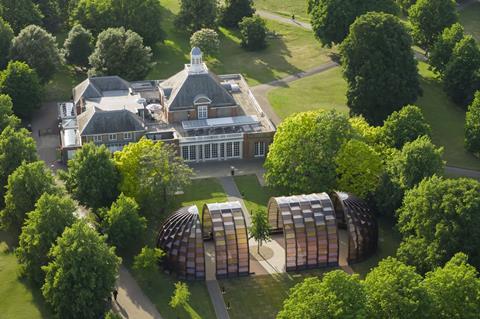
Marina Tabassum is one of South Asia’s most acclaimed architects. Her practice, Marina Tabassum Architects (MTA), is known for buildings that are raw and innovative, rooted in context and rich in meaning. Based in Dhaka, Bangladesh, her work includes the Bait Ur Rouf Jame Mosque, the Hamidur Rahman Memorial Complex and Villa Rouf – projects that have deservedly brought her international acclaim.
All of which makes this summer’s Serpentine Pavilion a puzzling disappointment. A Capsule in Time, as the pavilion is titled, feels underwhelming. A certain slightness or open-endedness can often be a strength in a temporary structure, inviting reflection. But here, the effect feels more tentative than deliberate – a surprisingly muted offering from such a highly regarded architect.
The contrast is especially striking given Tabassum’s previous success with modest, temporary structures. This is a typology she and her studio have handled well in the past and one that should, in theory, suit the Serpentine format.
MTA’s Khudi Bari modular homes for marginalised people are a simple, highly effective solution to pressing housing need among vulnerable communities in Bangladesh. The Phoenix Will Rise, a pavilion-like structure installed at the Whitechapel Gallery in 2019, in collaboration with Rana Begum, also worked well.
With A Capsule in Time, Tabassum set out to explore ideas of temporariness and the ephemeral. Hence the name. But the pavilion’s capsule-like form feels like a literal and somewhat simplistic translation of that concept. And the structure itself, despite its translucent materials, lacks the lightness and delicacy that might have brought those ideas to life.
The structure consists of four arched wooden sections. The faceted surface is made of clear polycarbonate, which is coloured different shades of light brown and yellow using tinted film, and held in place by dark brown metal frames.
The pavilion is Tabassum’s first structure made of wood, and the material is handled with a certain reticence here. The glulam is stained a dark brown, evoking both the natural world and brown furniture. It doesn’t, however, suggest a fun, playful summer-time structure.
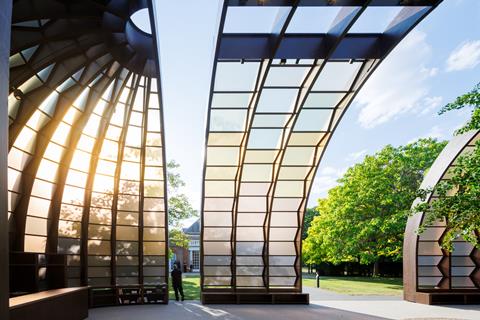
The weather on the morning of the press preview did little to lift the experience. Under grey skies and light rain, the Pavilion appeared particularly sombre. To her credit, Tabassum embraced the conditions, noting the way the rain played across the polycarbonate surface and the shifting patterns of light and shadow it produced.
Of course, it is perhaps unfair to judge any pavilion solely on a grey and wet London morning. Even so, the interior felt heavy and subdued – more inward-looking than welcoming, and lacking the buoyancy one might hope for.
Tabassum has said, “Light, to me, is a very important material in architecture.” And she has shown exceptional adeptness in her handling of light in other buildings, often directing bright sunlight through slits and slots to create strategically placed, high-impact beams. Of the Serpentine commission, she says: “One atmospheric idea that we wanted to bring into this pavilion is the translucency and the ethereal quality of light.”
In sunshine, the atmosphere improves. Light filters through the tinted panels, casting colourful shadows inside the structure, like sun shining through stained glass.
A key inspiration behind the translucent design was Bangladesh’s shamiana canopy tents. These marquee-like structures are common across the Indian subcontinent. Known as pandals in India, the awnings are made from bamboo supports covered with fabric, and provide shade at religious, cultural and family gatherings.

Tabassum recalls attending events held under shamianas as a child and enjoying the way the light filtered through the fabric roof. “The play of filtered daylight through the translucent façade draws on the memory of being under a shamiana at a Bengali wedding,” she says of the pavilion.
Hearing this made me long for a more ethereal structure – perhaps one made of fabric – rather than the solid, dark-toned object we have been given. Some of that delicacy and transience evoked in Tabassum’s reference feels lost in the final execution.
The pill-shaped pavilion sits in front of the Serpentine South gallery. One piece is moveable, sliding horizontally to connect with the end section to create a larger event space at one end of the capsule.
Tabassum is clearly inspired by geometric forms, and in other, more complex MTA buildings, the use of nested geometric shapes gives a formal purity that contrasts satisfyingly with their raw materiality. But here the capsule shape feels basic and unremarkable, while the zig-zag surface treatment doesn’t sit happily within the structure’s curved frame – neither satisfyingly organic nor crisply geometric.
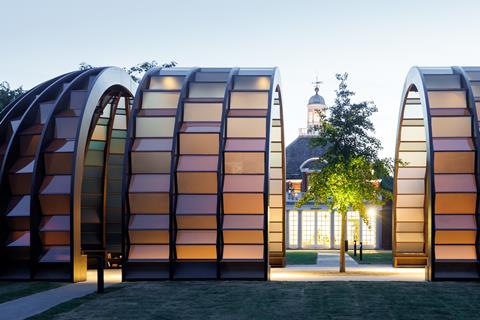
Like many of Tabassum’s previous projects, the pavilion also explores the threshold between inside and outside. At its centre grows a semi-mature ginkgo tree. This ancient, climate-resilient species is also found in the surrounding planting of Kensington Gardens.
Over the course of the pavilion’s life, its foliage will shift from green to the vivid autumnal yellow for which the tree is known. It is a beautiful presence, though its relationship to the structure that contains it feels only lightly sketched.
In conversation, Tabassum spoke about responding to the idea of a day in the park. “The Serpentine Pavilion celebrates the London summer as a time to be outdoors, connecting with friends and family in Kensington Gardens, and we want to celebrate the tradition of park-going,” she explained. Yet the pavilion itself feels more meditative than celebratory. It captures little of the light-heartedness or easy sociability this idea evokes.
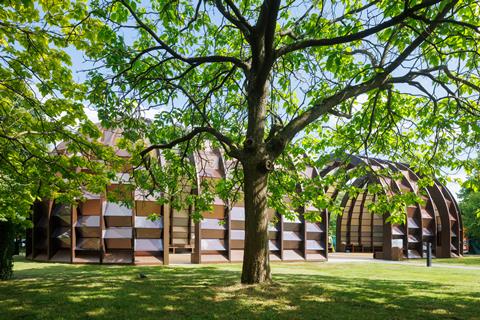
A second stated goal for the build – to bridge cultural and communication gaps in our fractured contemporary society – is both noble and ambitious. She and her team have assembled a collection of books celebrating the richness of Bengali culture and Bangladesh. These are stored on built-in shelves for visitors to browse. And they point to an envisioned afterlife post-deinstall, as a library open to all.
In an era of increasing censorship and mutual incomprehension, Tabassum would like the pavilion to function as a space where visitors can come together and connect through conversations and sharing of knowledge. A laudable aim, though one suspects the pavilion’s largely self-selecting audience may already be largely sympathetic.
This pavilion is less showy than many previous ones, less strident. And that does suit the mood of our anxious and abstemious times. One hopes it will prompt visitors to explore more of Tabassum’s work, which in Bangladesh has been consistently thoughtful, ambitious and deeply rooted in place.
What next for the Serpentine Pavilion? This is the 25th iteration, and a world full of pavilions would be a wonderful world indeed. But perhaps the whole notion of the pavilion is rather decadent in a country that can’t build the homes its population needs?
After a quarter of a century, it feels as though it might be time for a rethink to inject new vitality into the series, which perhaps has become little more than Art Lite – visually appealing but conceptually thin – social-media wallpaper for the comfortably insular London creative crowd.
Could it be time to break the project out of its staid Kensington confines and take it on the road? There are a thousand locations, beautiful and ugly, across the land that would make a more interesting context for a pavilion.
And what if the commission were opened up to those who haven’t yet built anything? It might make the logistics of design and construction more challenging, but it could also inject the series with fresh energy and raw invention – a chance to uncover new voices and spark something genuinely unexpected.
>> Also read: A harmonious blend of context and concept: Mass Studies reimagines the Serpentine Pavilion
>> Also read: The regulator steps into the spotlight
Postscript
The Serpentine Pavillion is open from 6 June to 26 October 2025 at the Serpentine South Gallery, Kensington Gardens, London W2 3XA, Monday 12-6pm, Tuesday-Friday 10am-6pm, Saturday-Sunday 10am-7pm.


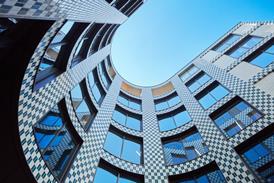
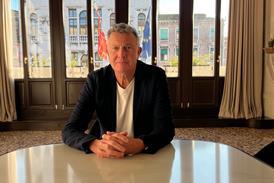
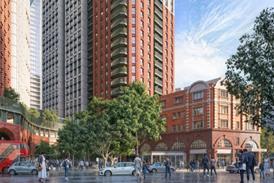




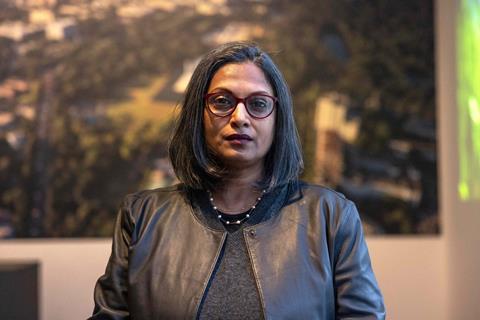

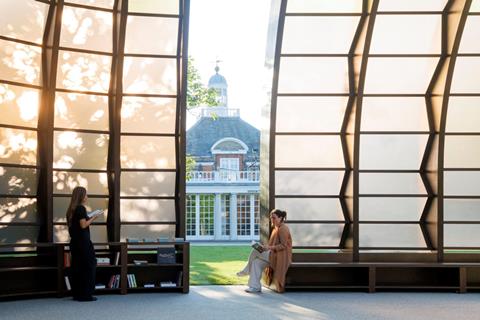
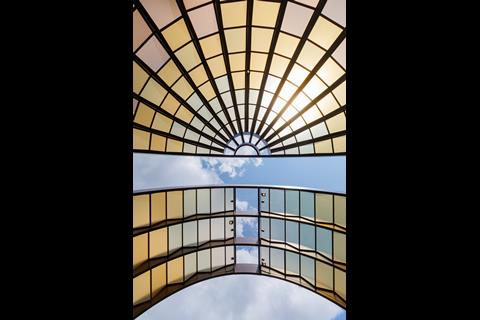
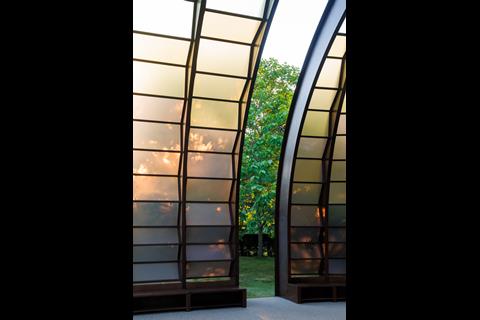
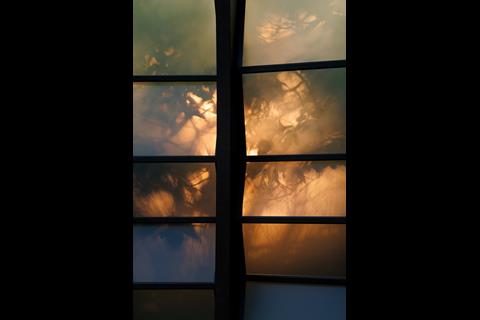
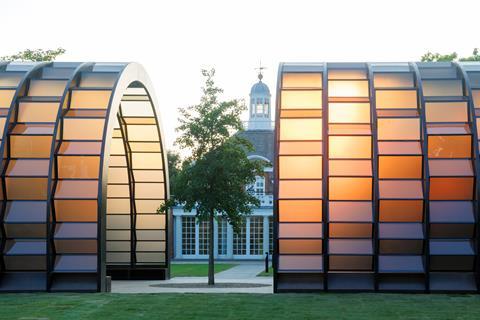
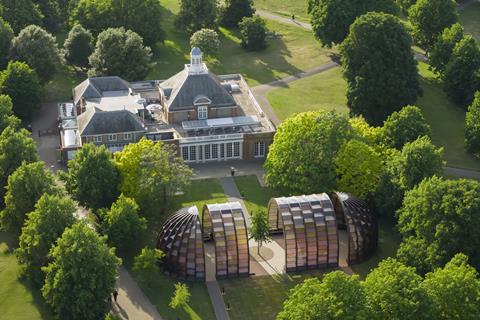







2 Readers' comments